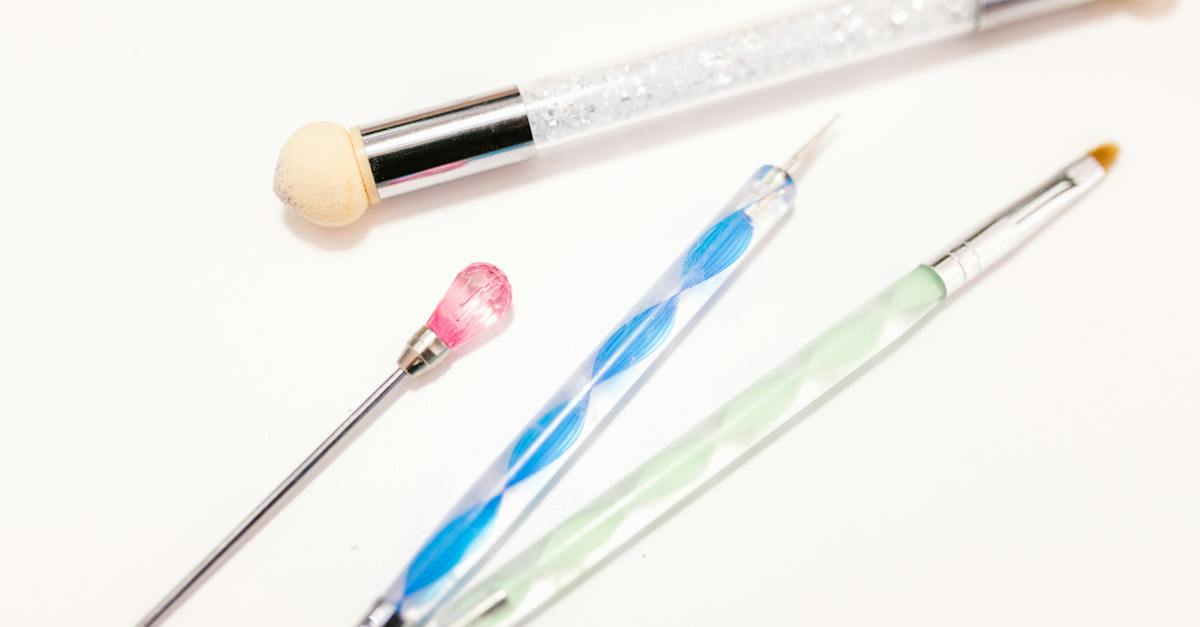This site contains affiliate links to products. I may receive a commission for purchases made through these links.
If you’re a stargazer like me, you know the importance of a well-collimated telescope. It’s the key to getting those crisp, clear views of celestial bodies. But did you know it’s possible to make your own collimation tools?
In this guide, I’ll walk you through the process of creating your own collimation tools. You don’t need to be an expert craftsman or have any specialized equipment. With a few household items and a bit of patience, you can create a tool that’ll keep your telescope in top shape.
So, whether you’re an amateur astronomer looking to save some money, or a DIY enthusiast seeking a new project, this guide is for you. Let’s delve into the fascinating world of collimation tools and learn how to make them from scratch.
Tools Needed
The process of creating collimation tools isn’t overly complicated or expensive. It calls for dedication, precision, and most notably, the right tools. By keeping things practical, we’ll utilize everyday items around the house, turning them into specialized astronomy equipment.
The first tool on our list is a sight tube. Also known as a Cheshire eyepiece, it’s a simple tube that assists with aligning the optical elements of the telescope. For this DIY project, a simple cardboard tube, similar to an empty paper towel roll, should suffice. Make sure it’s sturdy and the inner walls are as dark as possible. I’ve found painting the inside black works wonders.
Next up, you’ll need an eyepiece cap with a small hole in the center. This cap acts like a peephole, guiding your eye to the exact center of the telescope’s optics. A plastic cap that fits securely on your telescope’s eyepiece can do the trick. Keep in mind, the hole needs to be precisely centered and approximately 2mm in diameter.
A long flat ruler and flashlight are two more tools from your toolbox that you’ll need. We’ll use the ruler to ensure that the mechanics inside your telescope align correctly. As for the flashlight, it’ll be used to project a light beam into the telescope and highlight any alignment issues.
Last but not least, don’t forget about a set of screwdrivers and adjustable wrench – they will be essential for fine-tuning your telescope’s mechanics.
Here’s a quick overview of the tools we will use:
| Tool | Description |
|---|---|
| Sight tube (DIY) | Used for aligning the telescope’s optical elements |
| Eyepiece cap (DIY) | Guides your eye to the center of the telescope’s optics |
| Ruler | Ensures correct alignment of the telescope’s mechanics |
| Flashlight | Highlights alignment issues |
| Screwdrivers & Adjustable wrench | Used for fine-tuning the telescope’s mechanics |
Gathering these items is the first step in the journey of bringing the universe into sharper focus. Once you’ve collected all the necessary pieces, we can dive right into the process of making your very own DIY collimation tools.
Understanding Collimation
Collimation, in the simplest terms, is about aligning the optical components of a telescope. Contrary to common belief, it is not too technical to handle if you understand the basic concepts. Ingeniously, you’ll find everything you need to do this around your house.
Let’s delve deeper. Collimation is fundamental to getting the best visual performance out of a telescope. If the optics of a telescope aren’t properly aligned, objects can appear blurry or distorted. That’s a scenario any astronomy enthusiast would like to avoid. Properly collimated optics are the key to clear, crisp images of the cosmos, enhancing those star gazing sessions.
The tools mentioned previously, like a sight tube or an eyepiece cap, are instrumental in this process. These seemingly commonplace items can be transformed into powerful aids for your telescope alignment. Notably, you need not break the bank or be a skilled craftsman to put these together.
Using a sight tube, for instance, helps you align the telescope’s mirrors accurately. Similarly, an eyepiece cap with a small hole lets you view the alignment at a glance. These adaptations play a crucial role in making this technical process accessible for everyone.
While these rudimentary tools can aid in basic alignment, a collimation cap, cheshire eyepiece, or laser collimator offer advanced accuracy. But that is a discussion for another section.
So, understanding collimation and the relevance of homemade tools is an important step in maximizing your telescope’s capabilities. But remember, it’s not just the tools; it’s also about acquiring the knack of using them effectively.
Don’t worry if you’re not an expert yet, practice makes perfect and soon you’ll have a telescope perfectly fine-tuned for your star gazing.
In the subsequent sections, we’ll delve into how to craft these tools and steps you can take to ensure they are effective. Stick around and you’ll be a collimation champion in no time.
The Laser Method
When it comes to precision and the collimation of your telescope, The Laser Method shines (no pun intended!). It’s one of the top-tier methods employed, particularly for aligning Newtonian reflectors and other forms of telescopes with complex optical systems. Tackling the science of collimation, the laser method uses beams of light for a more advanced accuracy that leaves no room for error.
Let’s delve deeper into how you can create your laser collimating tool. First off, you’ll need some materials. These include:
- A regular laser pointer
- A small cylindrical tube
- Securing tape or cable ties
Creating your Laser Collimator
To create your laser collimator, start by attaching the laser pointer to the cylindrical tube using the securing tape or cable ties. The goal here is to ensure the laser pointer is centered and shooting straight down the tube. I won’t lie, this step requires utmost precision and a steady hand, so take your time here – you’re not trying to win any races.
Upon completion, you’ll have yourself a basic laser collimator. Now, to use it, slot it into the focuser and illuminate your telescope’s interior. Remember, the alignment part requires delicacy. There’s no trial and error – every move counts.
One tip that comes handy in the laser method is understanding the beam’s path. Your beam should align with the center of the mirror and be reflected back onto itself. Any deviation from this path flags an issue in alignment.
The beauty of using a homemade laser collimator is its affordability. Plus, it’s an enjoyable DIY project. With careful setup – and perhaps a few tries – you’ll be ably equipped to fine-tune your telescope’s collimation, no matter how complex, at your convenience. This isn’t to say the laser method is a walk in the park. There are some prerequisites, which become clearer with practice, but the results are worth the effort. Now, let’s get into some do’s and don’ts when using the homemade laser collimator.
The Cheshire Eyepiece Method
After learning how to create a homemade laser collimator, let’s dive into another popular technique for telescope collimation: the Cheshire Eyepiece method. Although laser collimators are quite effective, they can become problematic when not calibrated accurately. Hence, you might want to consider the Cheshire eyepiece – a simple, yet effective tool with minimal chances of going wrong.
A Cheshire eyepiece is a tube containing a small flat mirror and a peephole. Its design enables the collimation of both the primary and secondary mirrors in reflector telescopes. Here’s a peek into the procedure:
- Begin by removing the telescope eyepiece and inserting the Cheshire in its place. This placement allows you a direct view of the telescope’s mirrors.
- After inserting the Cheshire, you should look through its peephole. Ensure the reflected rings align perfectly with the outer edge of the secondary mirror.
- Finally, check for a slight black dot in the center of the concentric circles. The presence of this dot indicates that your telescope’s primary mirror is correctly aligned with the secondary mirror.
The Cheshire Eyepiece method isn’t complicated, but it asks for patience and a keen eye for detail. Beginners may find this method a bit daunting initially, but trust me, it’s totally worth mastering. Once you have a good grasp, the process will feel like second nature.
We’ve examined two wide-used procedures so far – the homemade laser collimator and the Cheshire eyepiece method. Both methods have their quirks and advantages, giving you the flexibility to choose a suitable method for your collimation task. So, why not give these a shot?
Remember, practice is your friend in this arena. With every step, you’ll continue to refine your skills in telescope collimation, inching closer to perfection with each turn of the mirrors.
The Barlowed Laser Method
With the basics of collimation under our belt now, let’s dive a bit deeper. There’s another method, folks often consider more reliable than the homemade laser collimator or the Cheshire Eyepiece method. This is the Barlowed Laser Method.
So, how does this work? Let’s examine.
Quite like the homemade laser collimator, the Barlowed Laser method also uses a laser. However, it’s got a twist. A Barlow lens is introduced into the equation. Here’s how I do it:
- Put a Barlow lens into your telescope’s eyepiece holder.
- Then, insert the laser collimator into the Barlow lens. Ensure it’s snug and firm.
- Turn on the laser and adjust the telescope until the laser beam is centered on the primary mirror.
- Next, make sure the laser beam is reflected back into the Barlow lens and forms a tiny laser doughnut on the face of the laser collimator.
This is a quick outline of how you’d proceed. The crucial aspect to remember when using the Barlowed Laser method is that collimation accuracy relies on the precision of your Barlow lens and the laser collimator. It’s impeccably crucial to keep these tools in top-notch condition for the most accurate results.
So, you might ask, “Why would I use the Barlowed Laser method instead of other more direct methods?”.
Well, one of Barlowed Laser’s strengths is that it’s less susceptible to the alignment issues common in the other methods. It caters a touch of fail-safe due to the addition of the Barlow lens. It’s specially beneficial if your scope has a significantly fast focal ratio.
With these points in mind, I can say that the Barlowed Laser method is definitely worth considering as a tool for personal collimation tasks. Keep practicing with it folks, and remember – in all collimation methods, attention to detail plays a key role.
Conclusion
So there you have it. We’ve journeyed together through the world of collimation tools, from creating a homemade laser collimator to mastering the Cheshire Eyepiece method. We’ve even explored the innovative Barlowed Laser Method. It’s clear that each method has its unique benefits, with the Barlowed Laser standing out for its resistance to alignment issues. But remember, no matter which method you choose, precision and attention to detail are key. Don’t be afraid to practice and refine your skills. After all, perfection comes with time. So go ahead, apply what you’ve learned and take your stargazing to the next level.




